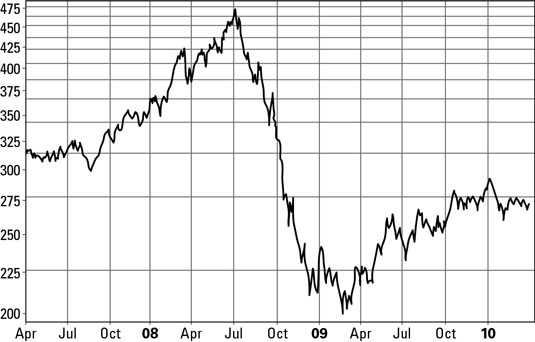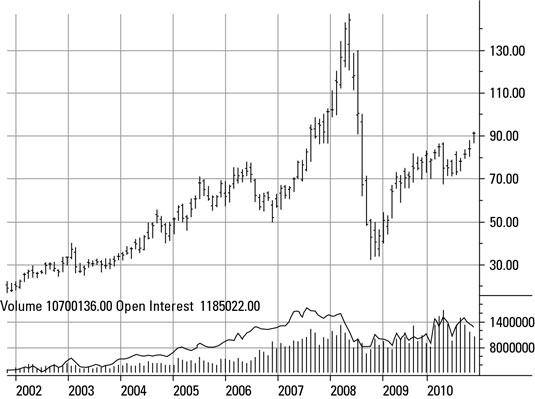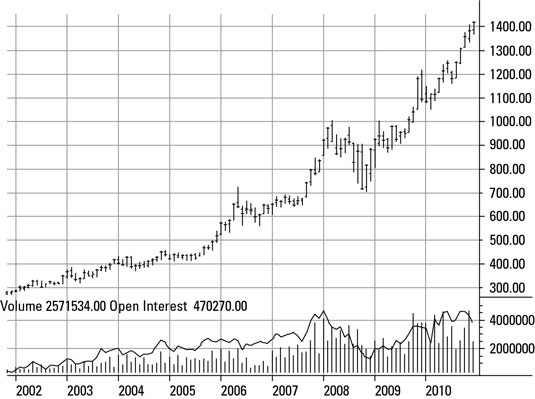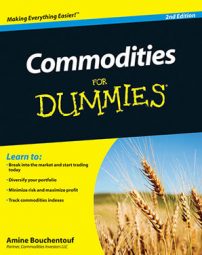In recent years, commodities as an asset class have attracted a lot of attention from the investor community. Many investors are turning to commodities because they see the value in investing in an asset class that’s growing in scale and importance.
The recent performance of the Reuters/Jefferies CRB Index accurately portrays the major dynamics at play in the commodities markets over the last several years.

Until the second half of 2008, investors piled into the commodities markets, driven by a desire to get exposure to this asset class. However, the second half of 2008 was characterized by the bankruptcy of Lehman Brothers, the implosion of the mortgage and real estate markets in the United States, and the ensuing liquidity crisis that threatened to bring down some of the country’s biggest financial and industrial institutions.
Given all the tumult in the market, it’s noteworthy that commodities were able to bounce back and stage a comeback in 2009. The year 2008 will go down in history as one of the most turbulent years in recorded financial markets; the liquidity crisis had profound impacts on the markets, and effects will be felt for years to come.
Broadly speaking, commodities were no exception to this rule, although some bright spots emerged in certain commodities, such as precious metals in general and gold specifically.
Other bellwether commodities, such as crude oil, reacted with linearity to the crisis, suffering equally large drops as the broader markets. You can clearly see the oil price drop as a direct result of the global financial crisis (GFC).
Crude is a phenomenal indicator of global economic growth and the state of the world’s economic health. As such, its reaction to decreased global economic growth due to the GFC is completely rational.

Another important factor to note in the chart is that oil prices between 2002 and 2010 more than quadrupled, from around $20 per barrel to more than $90 per barrel. Throughout this period, the market experienced some speculative excess on the way up (2007) and a commensurate burst on the way down (2008).
That said, the trend is undoubtedly in an upward mode, and that’s one of the most important takeaways from the last several years: Although the trend is upward sloping, it doesn’t necessarily mean it’ll move in a straight line. You can expect lots of drops and spikes along the way.
It’s also critical to isolate and examine each commodity and analyze it in its own right, separating it from the broader commodities complex. For example, although many commodities were broadly impacted by the 2008 GFC, certain commodities weren’t affected as much.
For example, gold didn’t experience the same kind of downturn as the broader markets. Gold has certain inherent characteristics because it’s both a precious metal and an alternative monetary currency. So although most other asset classes suffered major drops during the crisis, gold was able to perform relatively well; in fact, since 2002, gold prices have risen more than 450 percent.

Many investors, intrigued by the performance of commodities and their inherent characteristics, want in on the action. However, most investors are pouring into commodities without knowing why commodities are performing well — and this is a recipe for disaster.
Never invest in something you don’t understand. If you hear someone on TV or the radio mention an investment, perform your due diligence to get the ins and outs of the potential investment. Not understanding an investment before you invest in it is one of the easiest ways to lose money.

